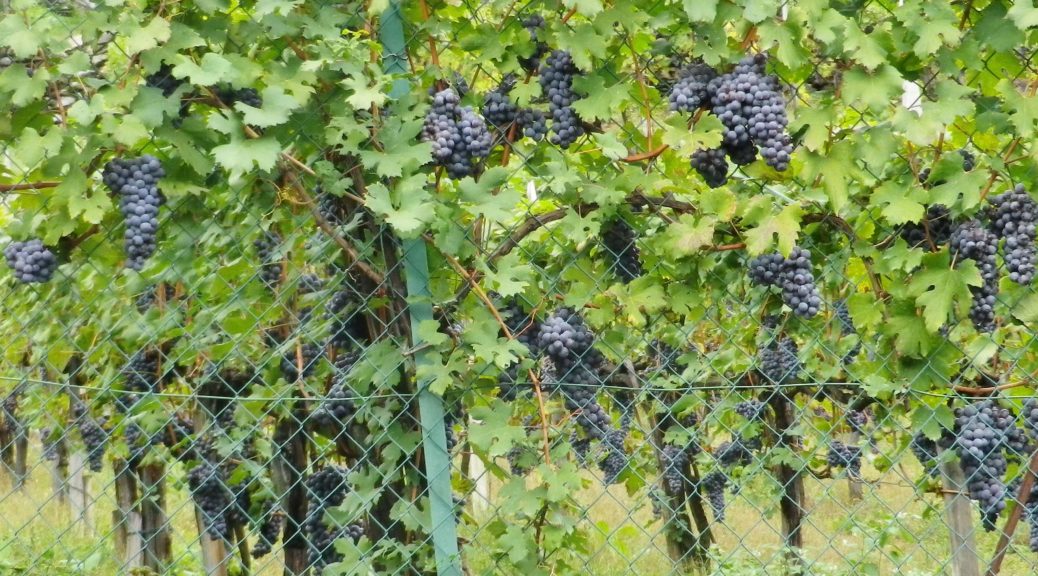What I Learned
While the Valtellina wine region is not the northernmost wine producing area in Italy, its grapes grow at altitudes of over 760 meters (2500 feet). The terrain here is dominated by mountains: rocky, incredibly steep, subject to sudden changes in weather from the north.
The classification system in Valtellina, like the appellation controlee system in France, is based on geography. In Valtellina, there are five recognized areas of cultivation of the Chiavennasca grape (known as Nebbiolo in the Piedmont). These five areas are distinct micro zones of terroirs and traditions, each with its own history, and each with its own Chiavennasca wine. Visiting each area, and sampling their wines, provides an excellent opportunity to explore the different expressions of Chiavennasca as vinified in Valtellina.
Valgella: largest zone with 137 hectares, begins east of Chiuro, and continues to Tresenda.
Sassella: with 130 hectares, begins just outside Sondrio, but heads west to the hamlet of Moroni. It is the oldest recognized zone, and perhaps the most well-known outside the region.
Grumello: also begins just outside Sondrio, running north and east from there, for a total of 77 hectares.
Inferno: the zone is centered around the township of Poggiridenti, and lies in part, above the Grumello zone near Montagna in Valtellina. Inferno means “hell” in Italian. Not surprisingly, this zone is one of the rockiest and least hospitable to work. It has about 55 hectares.
Maroggia: the most recently included zone, and the smallest with only 25 hectares, lies between the communities of Ardenno and Berbenno di Valtellina. However, it does have an old history, and cantinas equally aged to match. As usual, the church had a hand in establishing a medieval tradition of wine production, centered in this case around the Monastery of Berbenno. Up until the late Nineteenth Century, the wine was known specifically as Maroggia, and was sold locally, to include nearby Swiss communities. However, production and quality declined after that. Fortunately, the wine from this area is now making a comeback!
What I tasted:
2012 Sassella, Valtellina Superiore DOCG, Figli Bettini (San Giacomo di Teglio): A dry red wine with medium dark red color; notes of wood and dark cherries, medium tannins.
2009 Sassella, Valtellina Superiore DOCG, Nino Negri (Chiuro): A dry red wine with flavors of dark cherries, and a taste of spiced apricot, medium body and mouthfeel, strong tannins.
2009 Sant Andrea, (from grapes picked late, on the eponymous nameday – 30 November), Valtellina Superiore DOCG, Fratelli Bettini: A dry red wine with flavors of dark cherries and oak predominating, medium mouthfeel, medium tannins, big flavor.
2008 Sassella, Valtellina Superiore DOCG, Pietro Triacca: A very dry red wine with a rich nose and flavors of dark cherry and oak, medium mouthfeel and tannins.
2002 Maroggia, Valtellina Superiore DOCG, Consorzio Produttori del Vino Maroggia (Assoviuno di Tarotelli Matteo (di Berbenno)): A dry red wine with a rich, garnet red color; notes of ripe red berries and a whiff of smoke; smooth and rich mouthfeel with medium minus tannins.
